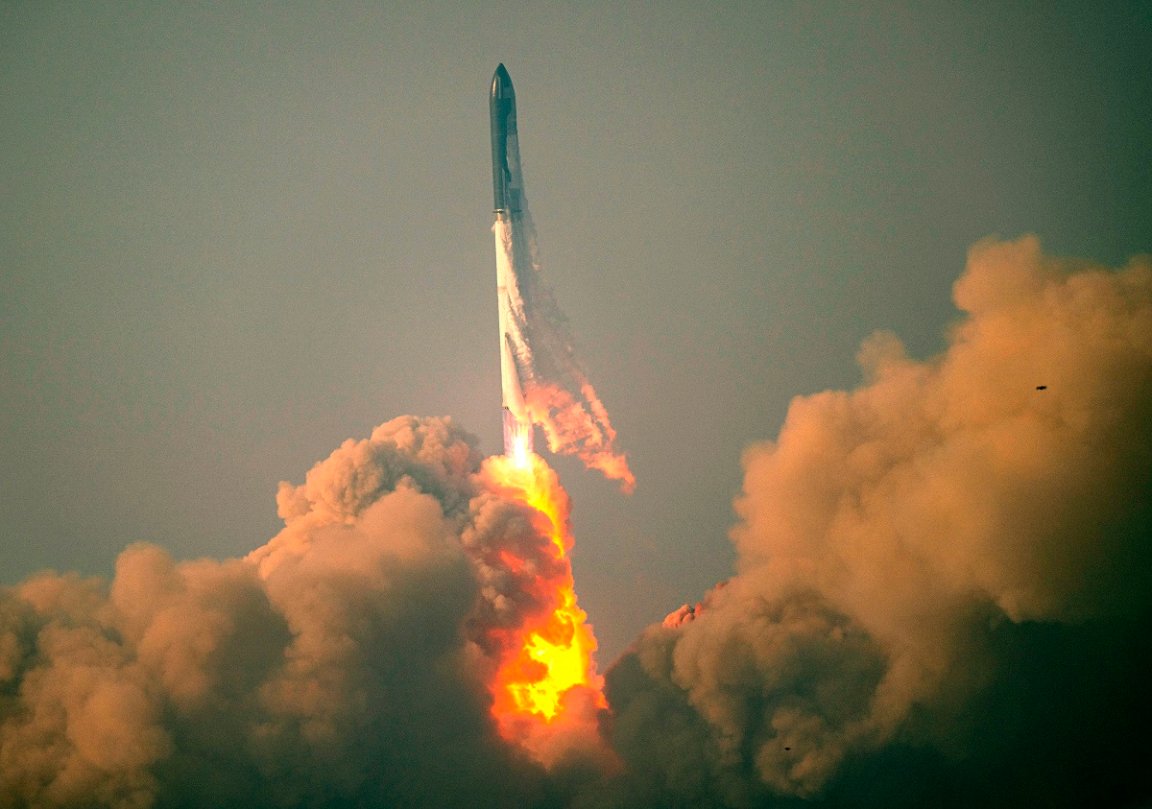
At Boca Chica, Texas, all eyes were on the sky for the first orbital launch attempt of SpaceX’s Starship, the most powerful rocket ever built.
The launch would soon explode. But on the ground, the massive forces from the takeoff heaved a colossal cloud of dust and debris that traveled for miles, the New York Times reports, ultimately crossing paths with a nearby city.
That city was Port Isabel, which at over six miles away you’d think would be safe from the aftermath. You’d be wrong. Buildings were shaken, at least one window was shattered, and residents were left stunned.
“It was truly terrifying,” local Sharon Almaguer told the NYT, adding that “this was on a completely different level” to previous launches.
Valerie Bates, a Port Isabel spokesperson, added that the whole city “ended up with a covering of a rather thick, granular, sand grain.”
Closer to the launch site, where residents were evacuated, the effects were even more potent. One viral video shows a parked car getting nailed by a piece of debris kicked up by the launch.
“There were bowling ball-sized pieces of concrete that came flying out of the launchpad area,” YouTuber Louis Balderas told the publication, adding that the launch created a crater he estimated to be 25 feet deep.
While it appears that no one was harmed, Eric Roesch, an expert in environmental compliance, told the NYT that it’s impossible to know whether the dust and debris are harmful without a proper chemical analysis.
The fact that there’s even dust at all, Roesch maintains, shows that SpaceX screwed up its impact modeling, as this kind of aftermath “was not really disclosed” to the public, he said.
And as it turns out, the far-reaching aftermath of the Starship launch could’ve been avoided entirely, but SpaceX simply hadn’t taken the necessary steps to do so — a decidedly callous move towards the people that live in the area.
For sizeable spaceports like Cape Canaveral and the Baikonur Cosmodrome, it’s standard practice for big launches to have either a giant trench or what’s known as a water deluge system, which suppress heat and sound waves both for the rocket’s sake and for the purpose of shielding the surrounding environment.
But according to Roesch, SpaceX opted to implement neither measure.
“It appears they just went ahead and just launched this thing,” Roesch told the NYT.
As rocket fans may well know, Starship’s launch was long tied up and delayed by the Federal Aviation Administration (FAA). Ironically, when the FAA finally gave SpaceX its approval, it ruled that a Starship launch would “not significantly affect the quality of the human environment.”
Clearly something was overlooked between that process and the launch, and it doesn’t exactly inspire much confidence that SpaceX’s launches going forward will be much safer, though NASASpaceFlight reports that the company will be installing a deluge system beneath the launch site for future launches.
Depending on who you ask, SpaceX’s Starship launch was either a spectacular failure or a rousing success. To some nearby residents on the ground, though, it’s simply proved to be a potentially dangerous nuisance.
“The locals here are just being sacrificed,” Almaguer told the paper.
More on SpaceX: Debris Rains Down on Protected Wildlife After Starship Explosion